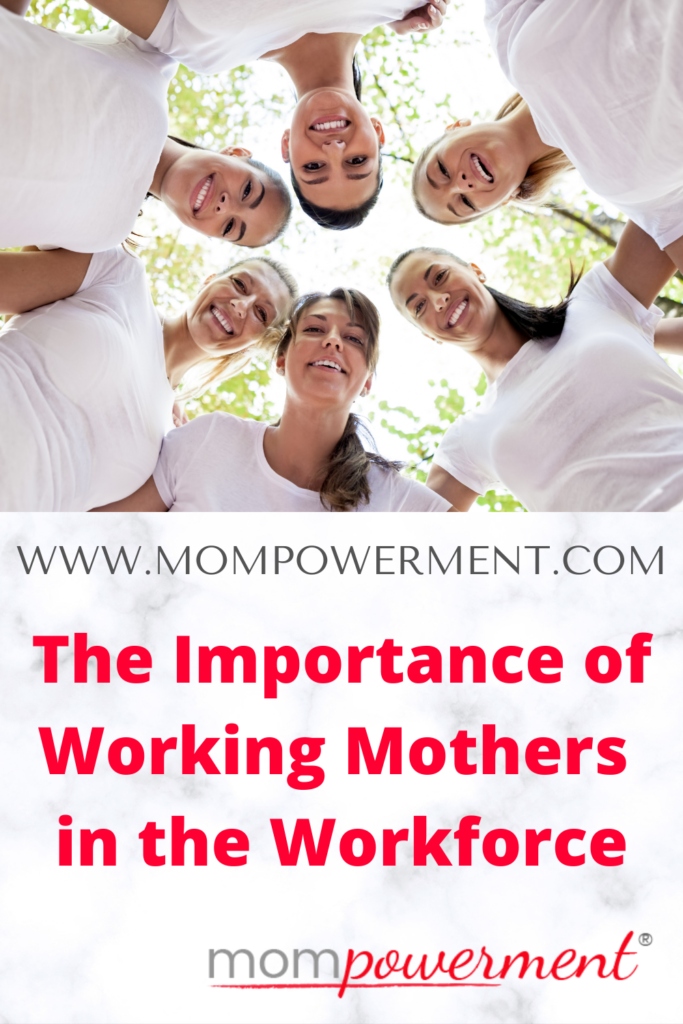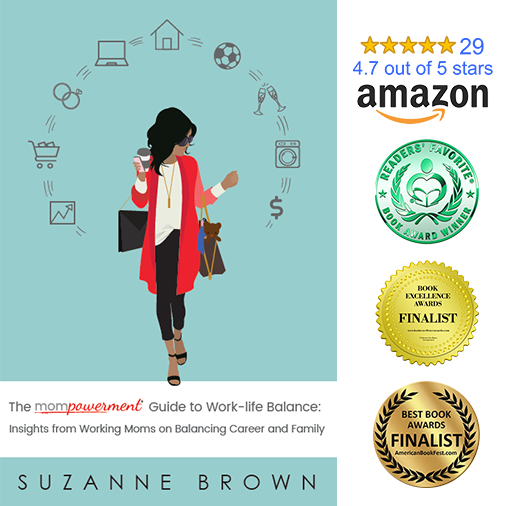
This International Women’s Day, women in the U.S. find themselves in a position they haven’t been in a while. The gains we’ve made over decades seem to be slipping away. The pandemic pulled back the curtain to reveal the reality working motherhood is incredibly challenging. It also led to more than 1.4 million working mothers leaving the workforce. I’m writing this as a reminder to us all about the importance of working mothers in the workforce. It’s not only that having women and working mothers in the workforce is the right thing to do; it also makes business sense and positively impacts the community.
Women and Innovation
It makes sense that having women on teams impacts innovation. It’s not only about having women that matters when it comes to innovation. It’s having diverse teams, which include women, that makes a difference. I’ve heard this again and again. It makes sense, though. More diversity allows for different views at the table. You have different points of reference, experiences, ways of thinking, etc. You likely better represent the diversity of your customers and solve their problems. So, yes, diverse teams can be more innovative.
A Great Place to Work makes an interesting point about this side of things in a blog post. They share, “When you have a diverse and inclusive workplace, you can unleash an explosion of ideas in your organization. But remember: hiring a diverse workforce isn’t enough. Employees from every group need to feel psychologically safe to bring their unique perspectives forward.” So the question then becomes how you make them feel comfortable enough to share their perspectives.
Women and Soft Skills
In college or post-graduate programs, we’re taught skills, thinking, and theory about specific areas. What we’re not often taught is the softer skills. I have seen again and again in my own experience and in countless blogs and articles as well as heard in conversations (live and online) that the softer skills are what can truly help you succeed. Things like emotional intelligence, communication, making connections (which impacts networking) help push you ahead. Korn Ferry found that women are better at most of these soft skills than men.
The Financial Impact of Women in Leadership
There is also a financial benefit to companies with women in top leadership positions. A study conducted by the Peterson Institute for International Economics (PIIE) analyzed almost 22,000 global publicly traded companies in 91 countries and found a positive financial impact of women in leadership positions. “Going from having no women in corporate leadership (the CEO, the board, and other C-suite positions) to a 30% female share is associated with a one-percentage-point increase in the net margin — which translates to a 15% increase in profitability for a typical firm.” Take that a step further, and imagine the impact of this increase in profitability in highly competitive industries.
Simply stated, when women are in 30+ percent of leadership roles, everyone wins. That means employees, investors, suppliers, etc. all benefit. It’s not only other women who are impacted positively.
Cost to Companies of Replacing Moms
Since we’re on the topic of the financial impact of women, let’s consider the negative financial impact of companies letting women and mothers leave a company. What if companies decide that they can simply replace the women who leave the workforce to become SAHMs? They could be thinking that there are plenty of others who can fill their roles, especially right now with so many people unemployed.
What will that cost the company? The cost of replacing employees who leave a company is between 50 and 200 percent of their current salary with more senior positions tending to lean toward the 200 percent side of things. This is the cost to find, hire, train, and get new employees up to speed. There is a time and financial cost as well as the impact of losing the knowledge and experience of the employee.
What happens if competitors are offering more flexible work solutions and those moms who left go to competitors? So, you get the impact of losing the knowledge and experience, paying for a replacement, and having the competition get the benefit. Seems like a steep cost.
Economic Impact of Working Mothers Leaving the Workforce
Companies could have a cost for replacing working moms. When you consider the importance of working mothers, you might not think of the economic ripples when they leave the workforce. The reality is that we could all feel the effects of working mothers leaving. Federal Reserve Governor Lael Brainard shares the economic concerns: “’If not soon reversed, the decline in the participation rate for prime‑age women could have longer-term implications for household incomes and potential growth…[which could harm] not only the prospects of these individuals, but also the economy’s potential growth rate.’”
Even if working mothers return in a few years, consider that they will likely be at lower income rates. It will take them time to get to previous income levels. That, too, has an economic impact. In the time it takes for working mothers to get back up to those levels, they spend less. There is a ripple from that reduction in spending.
Working Motherhood and Children
Let’s talk about one very personal aspect of working motherhood. Working motherhood has a positive long-term influence on children. According to a 2016 Pew Research study, 59 percent of Americans think that one parent in a two-parent household should stay home to care for children. The parent who stays home is usually the mother, although more dads have taken on this role in recent years.
A worldwide study of more than 13,000 women shows it might be better for moms to work, though. Daughters of moms who worked are more likely to have jobs, earn a higher wage, and have supervisory roles versus daughters of stay-at-home moms (SAHMs).
More than 18,000 men were part of that same study. It turns out there is a different, although still incredibly positive, effect on sons whose mothers worked. Men whose mothers worked are more likely to spend more time on family care duties than those whose mothers stayed at home.
And let’s also be honest in saying that motherhood looks different now than it did when many of us were kids. We spend a whole lot more time with our kids these days as moms (and dads). Who had a playdate as a kid? You simply played with your neighbors and your parents didn’t usually get involved. Add to that how much working mothers are taking on during the pandemic (e.g., managing remote learning) and it’s hours of more time (and a lot more energy).
7 Ways Companies can Help
You recognize the importance of working mothers in the workforce, but what can you do within your organization? I share a lot more in a recent post, but these ideas will get you started:
- Get feedback from employees. Yes, start with asking what they need. And then actually do something with that information. Asking without action shows you don’t care and their input didn’t matter.
- Ensure benefits align with employee needs. You might get feedback about what employees need and you see a place where benefits can help. Things like back-up childcare or even online tutoring during the pandemic.
- Provide flexibility. Do you really need your employees to be available 9-5? You’ll find most employees, not only working parents, want more flexibility. Empower employees to get the work done and manage their lives, especially when they’re working from home.
- Reconsider your approach to meetings. Whether or not it’s a pandemic, meetings take up a huge part of many employees’ days. Your time is your greatest asset. So, being more efficient and effective with meetings will only help you improve how your employees use their most important asset.
- Women/working moms need mentors AND sponsors. Your company can create programs that provide mentorship and sponsorship. They have different purposes and likely have different people who will participate. Create both for the women/working moms in your organization.
- Give diversity a seat at all tables. Diversity and Inclusion isn’t a topic for only the diversity and/or HR team(s). It’s a conversation that can impact all levels and departments. Allow the topic and goals to permeate your organization to get the full impact of diversity and inclusion. And that’s from your board to the most junior staff. It’s in who speaks at conferences from your leadership team and in front of your employees. It’s how you train your teams.
- Be vulnerable with your own struggles. As leaders of the organization, you might be struggling with the same things your employees are struggling with. Don’t keep your challenges behind closed doors. Show your human side and they will show theirs. You’ll understand that they need to be better in their roles. You might be able to have tough conversations before an amazing working mom on your team resigns because it’s all too much.
How are women making a difference in your organization? What about working moms? What are you doing for the women, especially working mothers, in your organization?
Looking for more ideas on keeping working moms at your company? Consider having Mompowerment speak to your women’s or working parents’ employee resource group (ERG).
PS Trying to attract working mothers to your organization or retain that amazing talent? Download my white paper on becoming a more balance-friendly employer.


